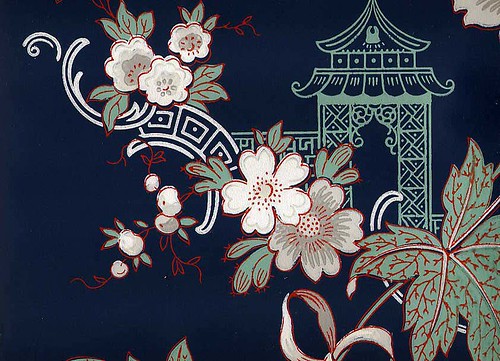Friday, January 29, 2010
"David" and the Shepherd
Saturday, January 23, 2010
lil' Marcel

In Search of Lost Time is a fictional autobiography by a man named Marcel. The first forty pages describe his sleeplessness as a young boy anxious for his mother's goodnite kiss. It is here that the Proustian Experience is introduced. As a man, Marcel, takes a madeliene cookie and dips it in his tea and suddenly recalls in vivid detail his memories at Combray where his aunt would give him a madeliene dunked in tea as a boy. The association, unadultered by any recurrance in his life since, bring forth memories potent and clear. He realizes that experiences remain eternally present in the unconscious and discovers his vocation to write In Search of Lost Time.
The novel blurs the discovery to tell the discovery. It is a work of art about one who becomes one who makes art. To attempt to read In Search of Lost Time without help may prove futile. I found How Proust Can Change Your Life by Alain de Botton and The Magic Lantern of Marcel Proust by Howard Moss both to be invaluable introductions to entering Proust's masterwork.
Thursday, January 21, 2010
papiers de tapisserie

The oldest fragments of European wallpaper were produced as small single sheets. There is no verifiable origin. The first appearances trace to Germany, Northern Italy, and the Netherlands, where graphic arts were most prominent. Wood-grain ceiling papers date through the 16th century as well as marbled paper. In 1481, Louis XI made purchase of 50 'grand rouleaux" paper blue. Richard III passed statute in 1483 that prohibited the importation of cheap foreign manufactured goods including 'painted paper'. In 1688 a popular shop at the sign of the Butterfly was 'dominotier' Jean Papillon, creator of 'papiers de tapisserie' or dominoes, repeated designs across multiple sheets using woodblock and stencil techniques.
Notable artists that have produced wallpapers include: Raoul Dufy, Koloman Moser, Alphonse Mucha, William Morris, Marie Laurencin, Walter Crane, Kate Greenaway, Will Owen, and Andy Warhol. Thomas Couture's masterpiece "Les Prodigues" is one of my favorites.

I enjoy the influence of wallpaper in my research for it's varied uses of panoramic scenes, repeated patterns, border friezes, and remarkable use of the "Grammar of Ornament".
French design on tile
Wednesday, January 20, 2010
le jardin anglais
Pride and Prejudice (1813)
Jane Austen

British landscape design is rich in history and legacy. The diliberate arrangement of nature served a course of various functions. Walls, hedges, and ha-has enclosed areas to allow spaces to become orchards, picturesque, and gardens for pleasure and contemplation so as to express the relationship between humankind and nature. The endeavour of the English landscape garden is a well-textured array of debates in taste and function. Manifestos of intelligence and imagination, garden literature deserves its own regard: "As is the Gardener, so is the Garden"-Thomas Fuller (1732).
Of course I have my favourites, Horace Walpole (1717-97), Capability Brown (1716-83), and Humphry Repton (1752-1818). Published in 1780, Walpole's 'History of the Modern Taste in Gardening' stressed literary inspiration. Brown's radical emphasis was on the form of the landscape itself, eliminating the identity of a specific garden for place of a sublime poetic composition. Famous for his book-bound surveys, Repton was a master of the English formal garden. His "Red Books" left no detail without consideration. He divided up the plan into sections that included Character, the Approach, the House, the View From the House, etc. to create maximum effect for the eminence of his clients. Repton included fantastic drawings of great detail before and after.

The secrets of success in landscape design are an inspiration to my approach to a project. I ask myself about the function and context of the space, dissecting it into parts according to common vantage points and oppurtunity to include theme or themes of import. I can only hope that the results are as timeless and pleasant... that each thought becomes a 'loggie delle muse', the Elysian Groves, or a secluded place for young lovers.
further reading:
The Genius of Place (1975)
Edited by Hunt & Willis
Tuesday, January 19, 2010
Can I Be The Missing Link?
For the purposes of knowing what art is let us define it in two ways:
1. Art is an experience
(a) the experience of the viewer- what the viewer brings to the experience (knowledge or not; taste...) and what they walk away with
(b) the experience of the art object- where it is experienced and it's context, it's lifespan and preservation, it's provenance
(c) the experience of the creator- intent, process, and should take into account all three experiences
2. Philosophically art can be defined as the content and it's means of representation and the appropriateness or inappropriateness of content to representation and vice versa.
With our terms defined, can we stop supporting bad taste. There are wrong experiences to art. If your reaction to Carl Andre or is that a 5-year old could do it, then that is wrong. That reaction is nowhere near the intent of the artist and not worth your time in the experience. Learn something and come back. Kehinde Wiley... now a 5-year could have thought of THAT! Who told this guy he should stop thinking before he started painting? Don't let technical proficiency cover up the lack of thought he puts into his work.
Thursday, January 14, 2010
Hand-made tile installation
I researched the design thoroughly. The out come is 9 ft of a formal Italian garden landscape that includes the Villa Borghese and approx. 6 ft of an Italian countryside (campagna) including Villa Capra (Villa Rotunda).
The clients, Sherry Hayslip and Cole Smith, are very pleased.
Beginning the process
These are the initial questions of branding. Branding is a "trustmark". It's shorthand. It's a sorting device. It's part of the competition for share of mind.
Once branding is established, part of the followthrough is authenticity. Authenticity refers to self-knowledge and making decisions that are congruent with that self-knowledge. The actions are to be aligned with heritage and value proposition.
These are the questions I am mulling, distilling.






